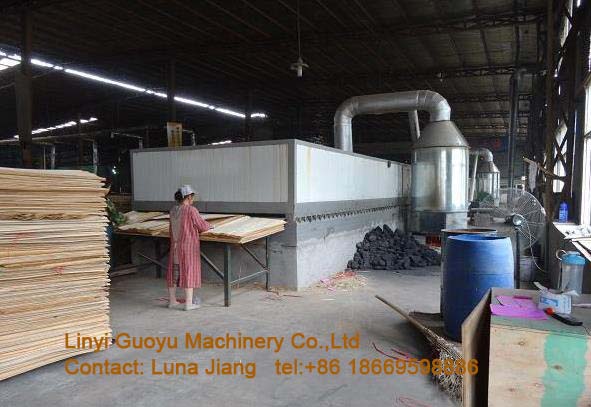19 Aug,2020
Each kind of dry equipment of veneer dryer has its specific scale of use, and several kinds of boring equipment can be found for each kind of data to meet the basic requirements, but * only one is applicable. If the selection is not appropriate, in addition to unnecessary one-time purchase cost, users pay a heavy price in the whole life cycle. Therefore, in the selection of boring equipment, first of all, we should follow the principles of applicability, fast drying speed, low energy consumption, saving investment, low operating cost and environmental protection. The second is to consider the different physical and chemical properties of boring materials, boring requirements, production conditions and enterprise development planning.

The physical and chemical properties of the data include shape, moisture content, water content, crystal water, particle size, bulk density, viscosity, thermal sensitivity, softening point, phase transition point, easy to destroy crystals or particles, etc.; the boring characteristics of the data, under the selected dry conditions, boring curve, critical water content, equilibrium water content, etc; Information on the impact of product value and boring effect on the product, such as product moisture, pollution, temperature, wear, damage, damage, rehydration, etc. The data recovery rate and the top-down process of data dryness should also be considered. When selecting boring equipment in practice, in addition to the adaptability of the equipment itself, the physical properties of data, auxiliary machinery, auxiliary data, public damage and expenses (equipment cost, operation cost, etc.) should be considered comprehensively.
The veneer dryer is determined by experiment. To sum up, the selection of boring equipment should consider the following objectives: in practice, in addition to the adaptability of the equipment itself, the physical properties of the data, auxiliary machinery, auxiliary data, pollution and cost (equipment cost, operating cost) should be comprehensively considered, and appropriate accessories should be selected and determined by test. To sum up, the selection of boring equipment should consider the following objectives:
(1) Production capacity, type (intermittent, semi continuous, continuous) (2) initial and terminal water content (3) particle size, particle size distribution (solid particles) (4) boring activity, inhalation reduction (5) operating temperature (6) explosive (steam / air, dust / gas) (7) toxicity (related parts) (8) dry medium (referring to air and steam used for convection)( Inert medium, etc.) (9) corrosion conditions (10) physical and chemical data (11) physical processing characteristics (12) floor area requirement (13) dry energy consumption (14) post treatment required (in a connecting unit, cooling, condensation, coating, packaging, etc.) (15) past experience (generally, not applicable to new dryers) (16) heat recovery requirements (energy consumption) (17) pretreatment Requirements (pilling, centrifugation, vacuum) penetration (18) information on grinding characteristics (19) medium type (inert medium, oxygen poor medium, steam or air)